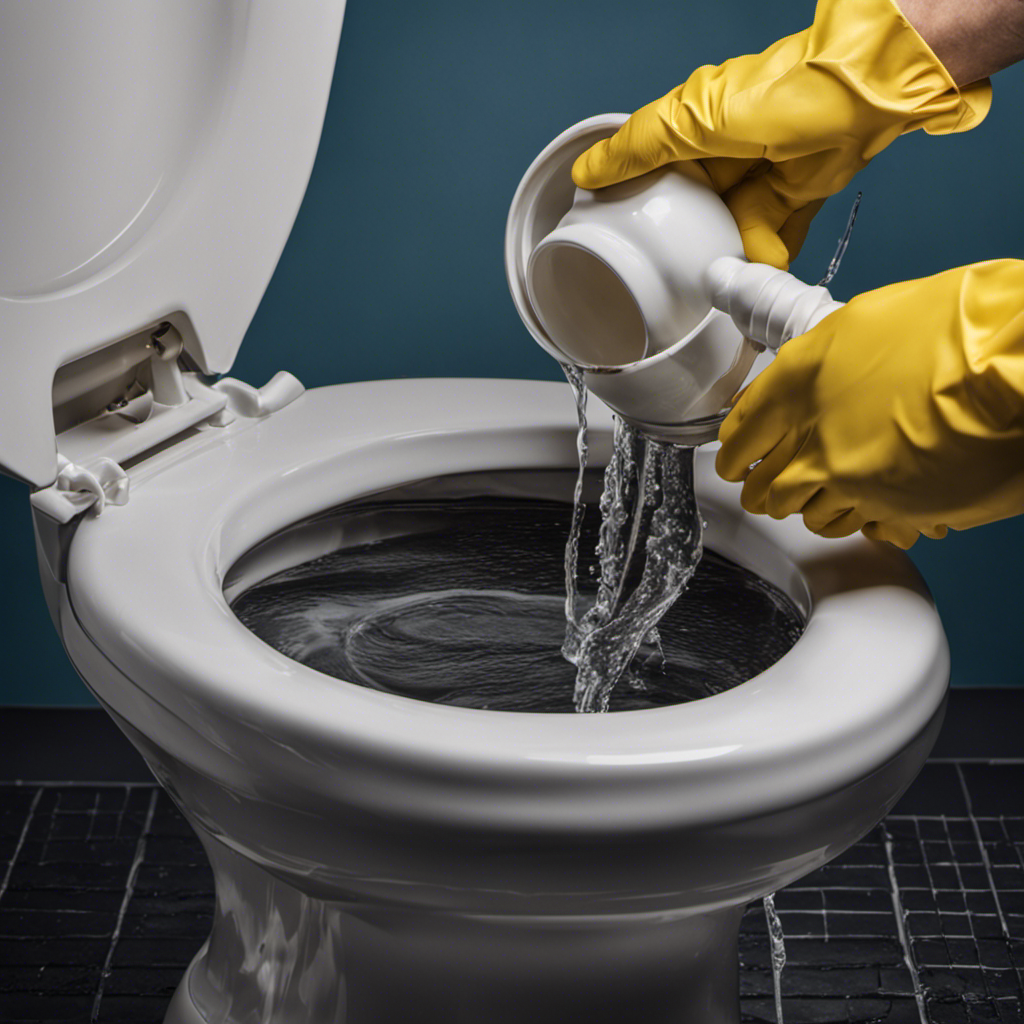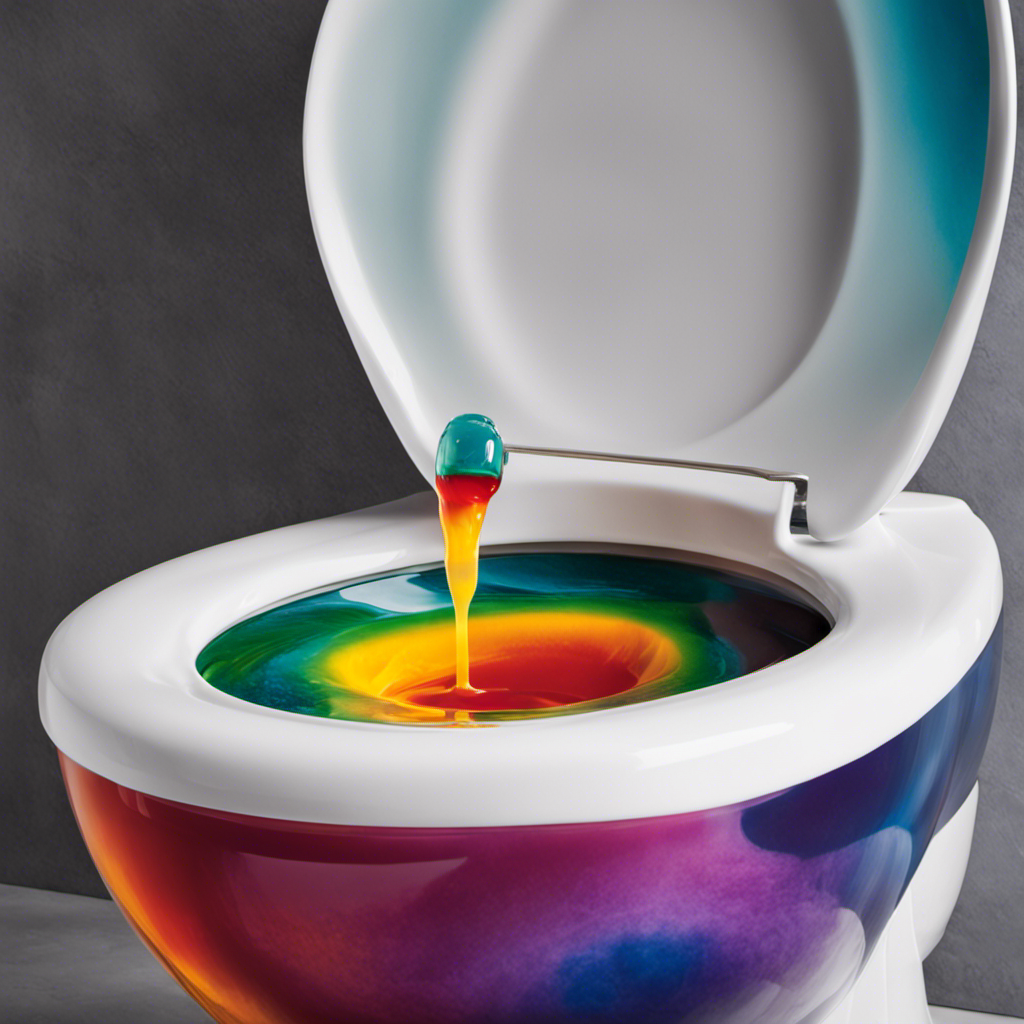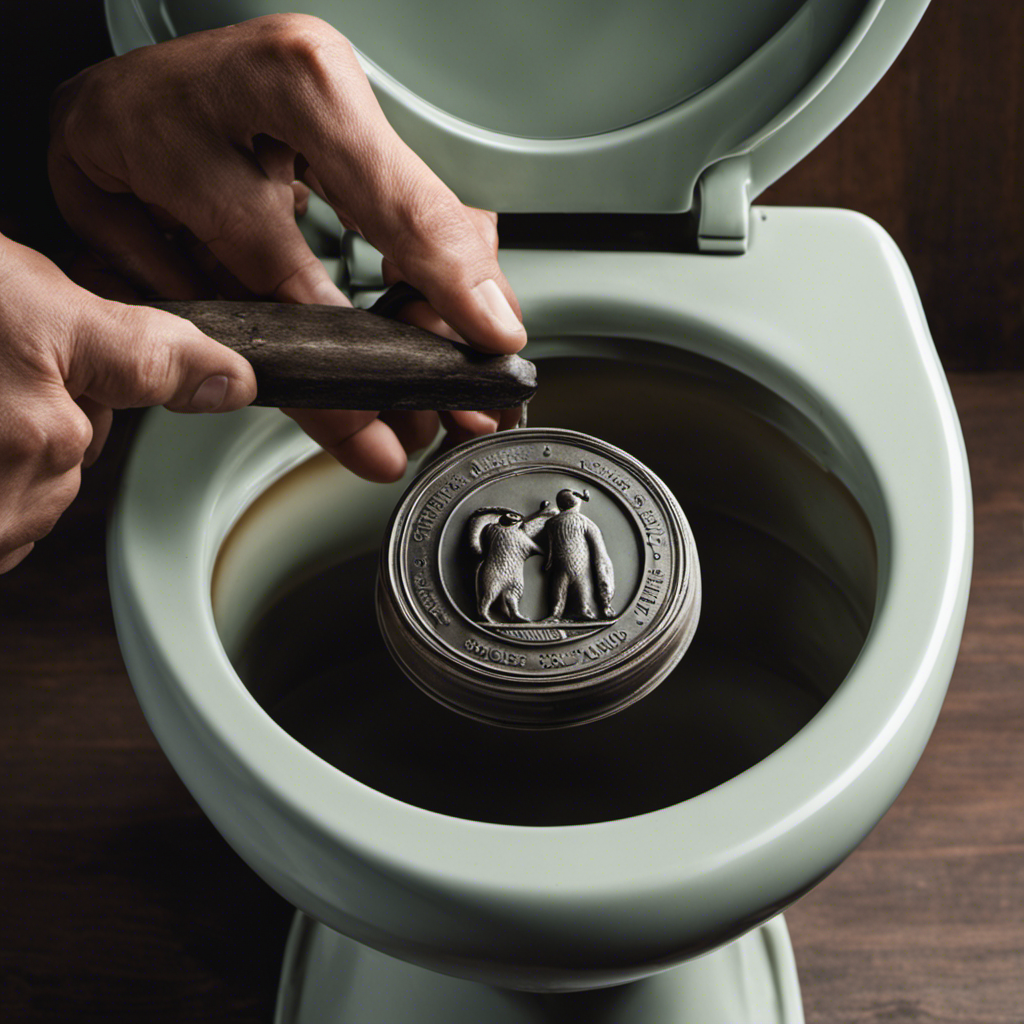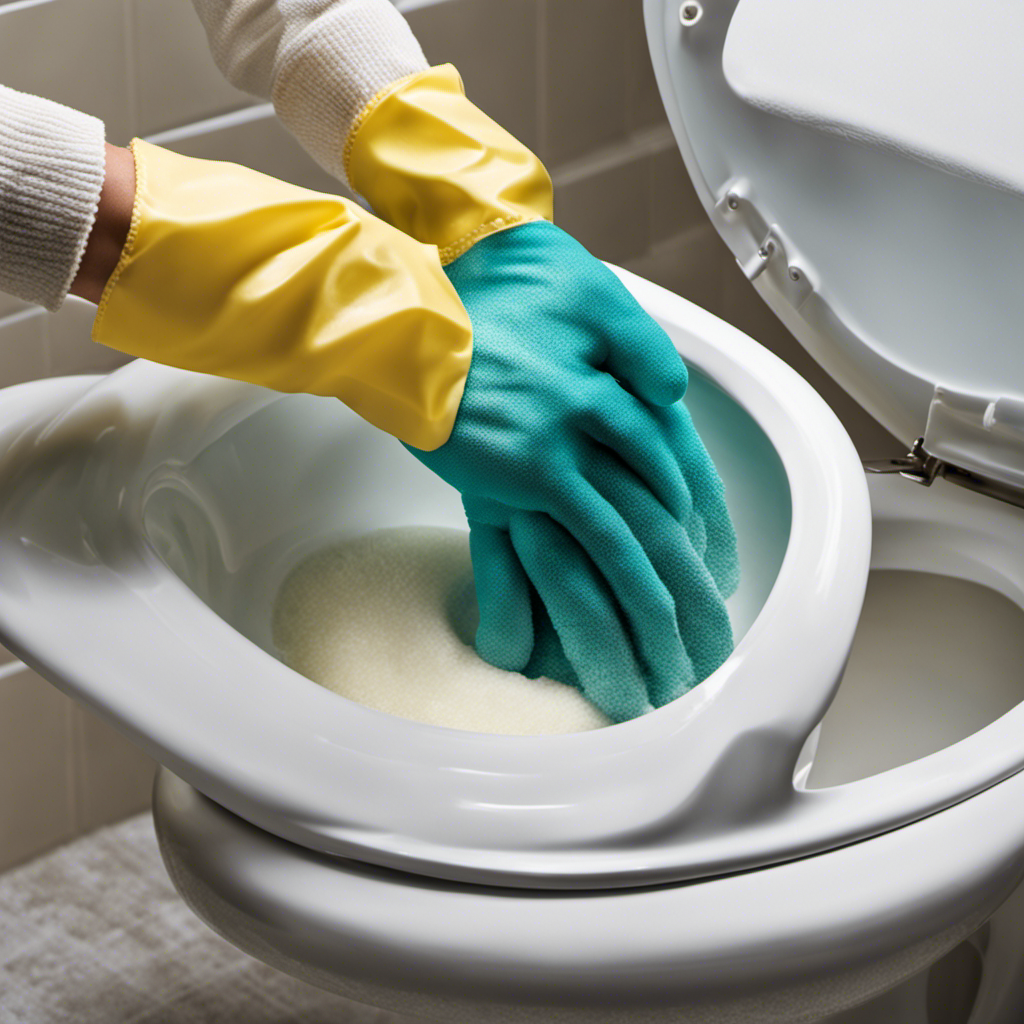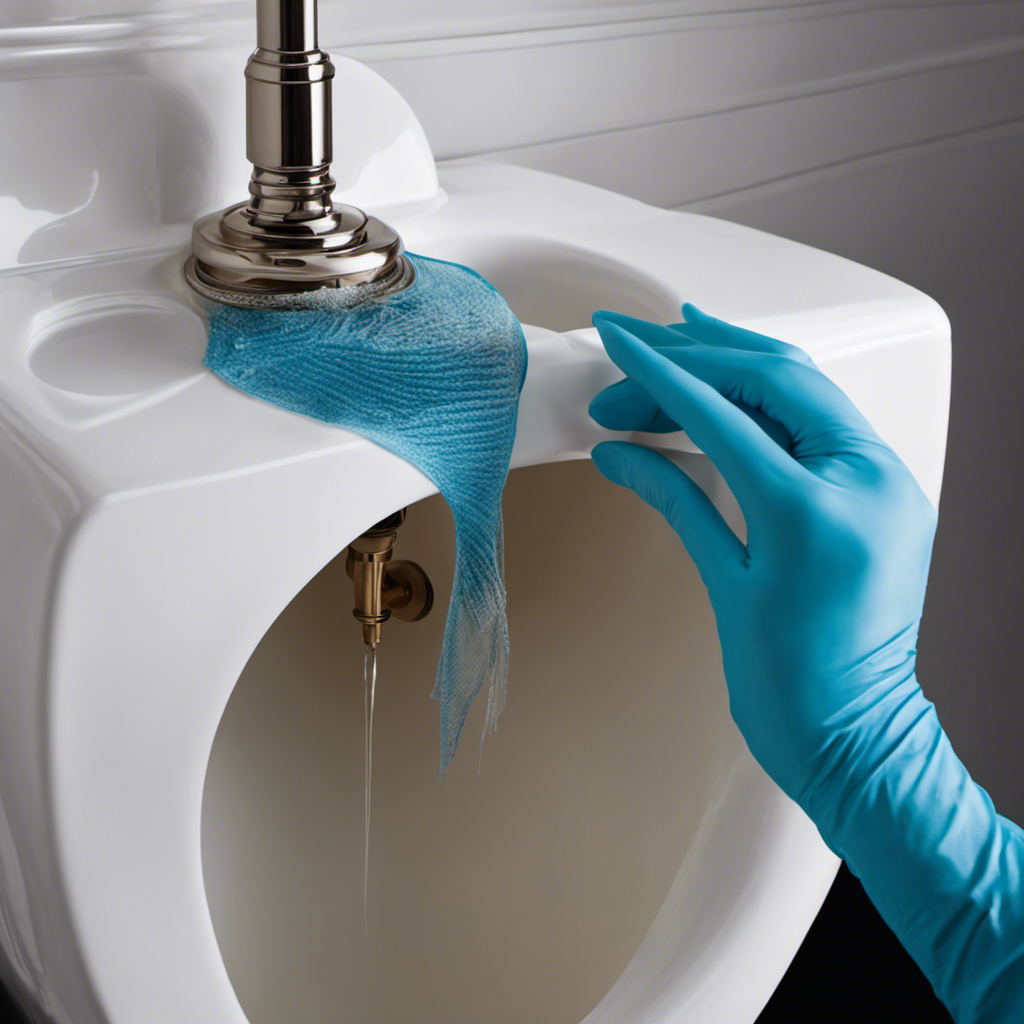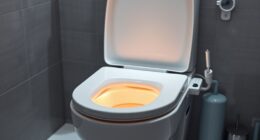When it comes to dealing with a clogged toilet, time is of the essence. Trust me, I’ve been there before, and there’s nothing worse than a backed-up toilet causing unnecessary stress.
But fear not, because I’m here to guide you through the steps of unclogging a toilet quickly and efficiently. In this article, I’ll show you the necessary tools, the right unclogging methods, and how to prevent future clogs.
So let’s dive in and get your toilet back to its pristine state in no time!
Key Takeaways
- Determine the severity of the clog to decide the best course of action.
- Gather the necessary tools and supplies before starting the unclogging process.
- Choose the right unclogging method based on the severity of the clog and the available tools.
- Be patient and persistent when implementing the unclogging technique.
Assess the Severity of the Clog
First, you’ll need to determine how severe the clog is. This will help you decide the best course of action to take.
Common causes of toilet clogs include excessive toilet paper usage, flushing non-flushable items such as wipes or feminine hygiene products, and a build-up of mineral deposits or debris in the pipes.
To prevent toilet clogs in the first place, it’s important to use toilet paper in moderation and avoid flushing anything other than toilet paper and waste down the toilet. Regular maintenance, such as using a plunger or a toilet auger, can also help prevent clogs from becoming severe.
Once you have assessed the severity of the clog, you can proceed to gather the necessary tools and supplies to unclog the toilet effectively.
Gather Necessary Tools and Supplies
Next, you’ll need to grab the necessary tools and supplies to get the job done efficiently. In order to unclog a toilet quickly, there are two main tools you should have on hand: a toilet plunger and a drain snake.
| Tool/Supply | Description |
|---|---|
| Toilet plunger | A rubber suction cup attached to a wooden or plastic handle. It creates pressure and suction to dislodge clogs. |
| Drain snake | A long, flexible metal coil with a handle. It is used to reach deeper clogs and break them apart. |
The toilet plunger is your first line of defense against a clog. It works by creating a seal around the drain and using suction to dislodge the blockage. The drain snake, on the other hand, is used for more stubborn clogs that the plunger can’t handle. It is inserted into the drain and twisted to break up the blockage.
Having both of these tools ready will ensure that you have the necessary equipment to tackle any clog that comes your way.
Choose the Right Unclogging Method
To choose the right unclogging method, you should consider the severity of the clog and the tools you have available.
It’s important to avoid common mistakes that can make the situation worse. One common mistake is using too much force when plunging, which can damage the toilet or cause water to overflow.
Another mistake is using chemical drain cleaners, as they can be harmful to both you and the environment.
Instead, try alternative methods such as using a plumbing snake or a toilet auger. These tools are designed to break up and remove clogs without causing any damage.
Implement the Unclogging Technique
Once you have assessed the severity of the clog and chosen the appropriate method, it’s time to implement the unclogging technique. To ensure a successful outcome, it’s important to avoid common mistakes during toilet unclogging. Here are some tips for handling stubborn toilet clogs:
-
Use a plunger: Place the plunger over the drain hole and firmly push down, then pull up quickly. Repeat this motion until the clog is dislodged.
-
Try a toilet auger: Insert the auger into the drain hole and crank the handle clockwise. Push and pull the auger to break up the clog.
-
Avoid using chemical drain cleaners: These can damage your pipes and are often ineffective against stubborn clogs.
-
Use hot water and dish soap: Pour a bucket of hot water mixed with dish soap into the toilet bowl. Let it sit for a few minutes, then flush.
Remember to be patient and persistent when unclogging a toilet.
In the next section, we will discuss how to prevent future toilet clogs.
Prevent Future Toilet Clogs
Avoiding common mistakes during toilet unclogging is essential in preventing future clogs. To ensure your toilet functions optimally, regular maintenance is crucial.
Here are some common mistakes to avoid:
-
Flushing non-flushable items: Do not flush items like paper towels, feminine products, or baby wipes as they can cause blockages.
-
Overusing toilet paper: Using excessive amounts of toilet paper can lead to clogs. Use only what is necessary.
-
Neglecting to clean the toilet regularly: Bacteria and debris can build up over time, leading to clogs. Clean your toilet regularly to prevent this.
Regular maintenance involves inspecting your toilet, checking for leaks, and cleaning it thoroughly. It is important to fix any issues promptly to avoid future clogs.
Frequently Asked Questions
How Do I Know if the Clog Is Severe Enough to Require Professional Help?
To determine the severity of a clog and decide if professional help is needed, assess the signs like slow draining or complete blockage. If simple DIY methods fail, it might be time to call a professional plumber.
Can I Use Any Household Items as Alternatives to the Necessary Tools and Supplies?
Yes, you can use household items as alternatives to the necessary tools and supplies. However, their effectiveness may vary. Let me explain how you can use these DIY methods to unclog a toilet quickly.
Are There Any Unclogging Methods That Should Be Avoided Due to Potential Damage to the Toilet?
Toilet unclogging methods to avoid include using harsh chemicals, as they can damage the toilet. Instead, try using a plunger or a toilet auger. Long term preventive measures include regular maintenance and not flushing non-flushable items.
Is There a Specific Order in Which the Unclogging Techniques Should Be Attempted?
When it comes to unclogging a toilet, it’s important to follow a specific order of techniques. By doing so, you can avoid potential damage and explore alternative methods if needed.
What Are Some Long-Term Preventive Measures I Can Take to Avoid Future Toilet Clogs?
To prevent future toilet clogs, I can take some long-term preventive measures. These include regular maintenance, such as using a plunger or a toilet auger, avoiding flushing non-flushable items, and ensuring proper water flow.
Conclusion
In conclusion, unclogging a toilet quickly is essential to avoid any unpleasant situations. By following the step-by-step guide outlined in this article, you can effectively assess the severity of the clog, gather the necessary tools, choose the right unclogging method, and implement the technique with ease.
Remember to take preventive measures to avoid future toilet clogs. With these simple yet effective tips, you’ll be able to unclog a toilet in no time, saving you from a potential catastrophe and turning you into the hero of the day!

